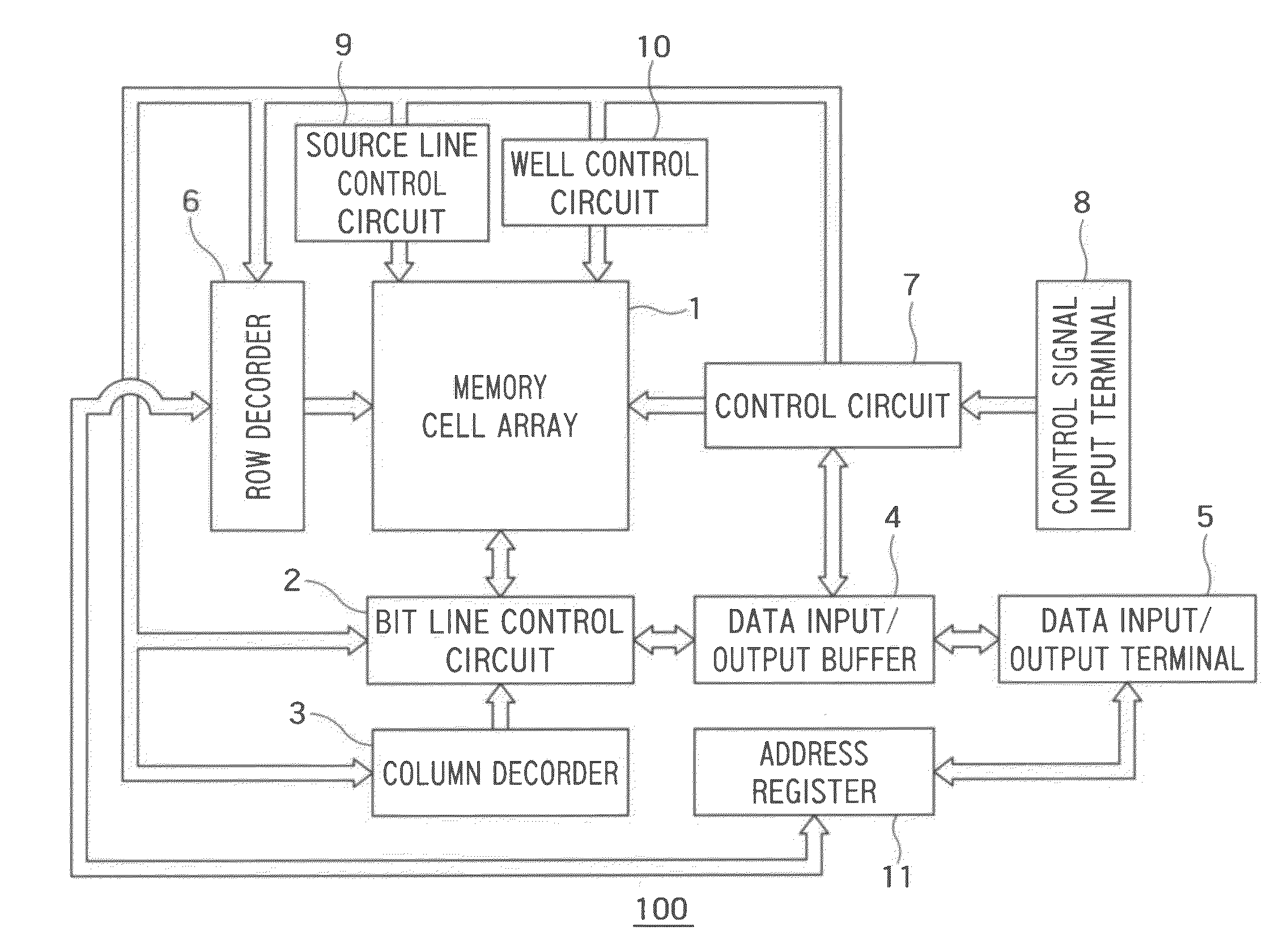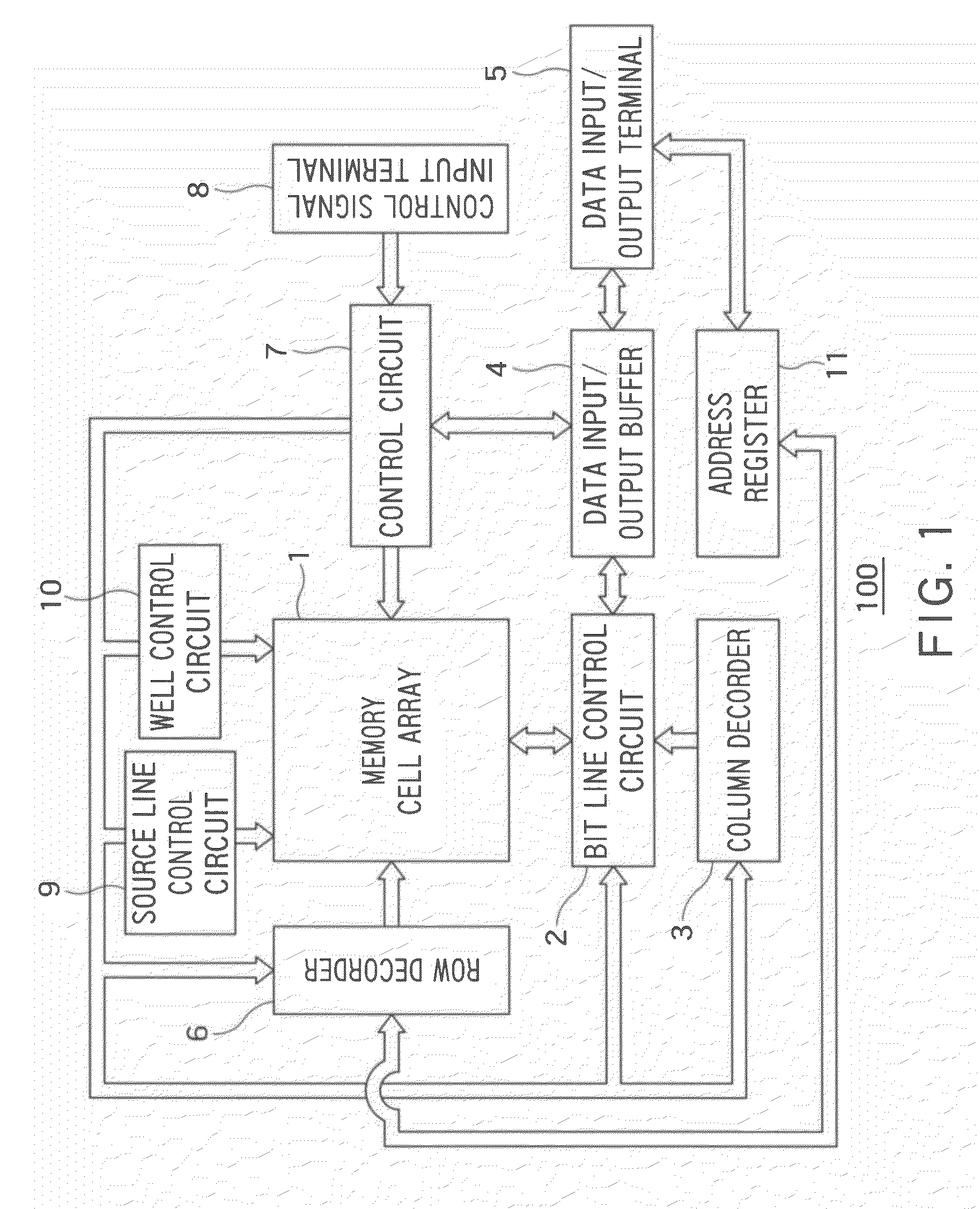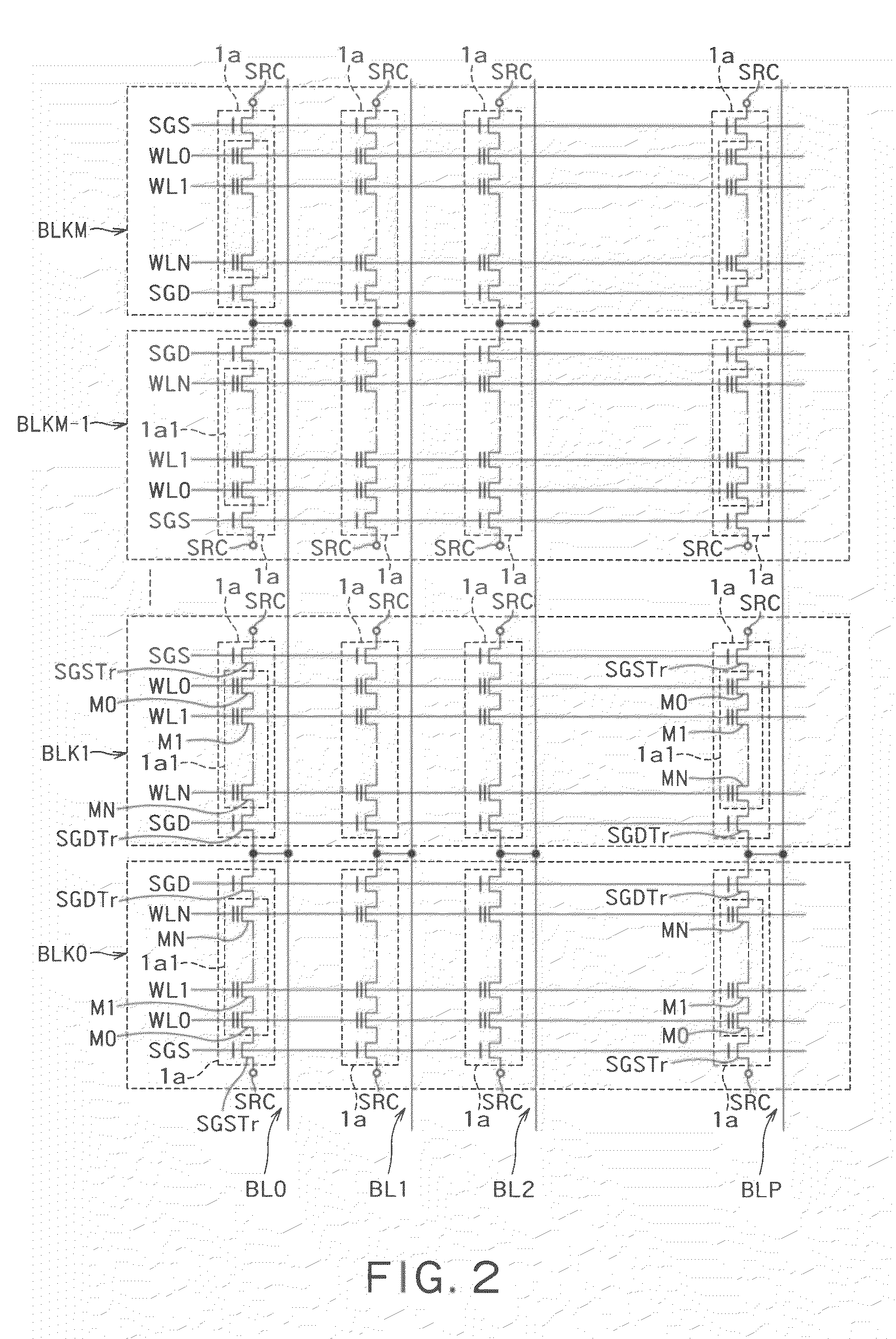Method of evaluating a semiconductor storage device
a semiconductor storage device and semiconductor technology, applied in the field of semiconductor storage device evaluation, can solve the problems of deterioration of tunnel insulating film, inability to recognize insulating film, and inability to store data
- Summary
- Abstract
- Description
- Claims
- Application Information
AI Technical Summary
Benefits of technology
Problems solved by technology
Method used
Image
Examples
first embodiment
[0029]First, the configuration of a NAND-type flash memory that is an example of a floating gate type EEPROM (semiconductor storage device) where a method of evaluating a semiconductor storage device according to the embodiment is applied will be described.
[0030]FIG. 1 is a block diagram showing an example of the configuration of a NAND-type flash memory 100. FIG. 2 is a circuit diagram showing an example of the configuration according to the first embodiment that includes a memory cell array 1, a bit line control circuit 2, and a row decoder 6 shown in FIG. 1.
[0031]As shown in FIG. 1, the NAND-type flash memory 100 includes a memory cell array 1, a bit line control circuit 2, a column decoder 3, a data input / output buffer 4, a data input / output terminal 5, a row decoder 6, a control circuit 7, a control signal input terminal 8, a source line control circuit 9, a well control circuit 10, and an address register.
[0032]The memory cell array 1 includes a plurality of bit lines, a plura...
second embodiment
[0078]In a second embodiment, an example of a method of evaluating a semiconductor storage device to obtain an electron density distribution of a wider range will be described.
[0079]FIG. 7 shows an example of an actual measurement value of the change of the threshold voltage in the case where the memory cells are left at the temperature of 25° C. after a write / erase operation is performed on the memory cells. FIG. 8 shows an example of a change rate ΔVt / ΔIn(t) of the threshold voltage in the case where the memory cells are left at the temperature of 25° C. after a write / erase operation is performed on the memory cells. FIG. 9 shows an example of an actual measurement value of the change of the threshold voltage in the case where the memory cells are left at the temperature of 40° C. after a write / erase operation is performed on the memory cells. FIG. 10 shows an example of a change rate ΔVt / ΔIn(t) of the threshold voltage in the case where the memory cells are left at the temperatur...
third embodiment
[0094]In a third embodiment, a method of calculating a detailed (high-resolution) electron density distribution and an example thereof will be described.
[0095]According to the detailed calculation of the above-described TFM, the existence probability P(x, t) of the electrons that have the small electric field and exist around the surface of the tunnel insulating film with the distance x from the surface of the tunnel insulating film is represented by the following Equation (6) as a function of the time t and the distance x.
P(x,t)=exp(−A*t*exp(−2kx)) (6)
[0096]In the Equation (6), A is a constant that is related to a frequency (attempt frequency) of the electrons tunneling the tunnel insulating film.
[0097]In this case, a curve line of the function shown in the Equation (6) for each lap time selected such that the logarithm of the time is an equivalent interval D=In(t(i+1))−In(ti) is calculated. FIG. 16 shows a curve line showing an example of a relationship between the existence prob...
PUM
 Login to View More
Login to View More Abstract
Description
Claims
Application Information
 Login to View More
Login to View More - R&D
- Intellectual Property
- Life Sciences
- Materials
- Tech Scout
- Unparalleled Data Quality
- Higher Quality Content
- 60% Fewer Hallucinations
Browse by: Latest US Patents, China's latest patents, Technical Efficacy Thesaurus, Application Domain, Technology Topic, Popular Technical Reports.
© 2025 PatSnap. All rights reserved.Legal|Privacy policy|Modern Slavery Act Transparency Statement|Sitemap|About US| Contact US: help@patsnap.com



